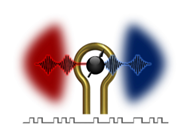 The everlasting rat’s nest that is scientific computing data management, the permanent quest for more advanced-level processing power, and investments in new fabs for advanced chips are HPC topics in the news this week.
The everlasting rat’s nest that is scientific computing data management, the permanent quest for more advanced-level processing power, and investments in new fabs for advanced chips are HPC topics in the news this week.
Taking on data management at the upper reaches of data-intensive workloads is Harvard University Associate Professor Stratos Idreos, who two years ago won U.S. Department of Energy Early Career Research Funding award. In an article published in the July edition of ASCR Discovery, which focuses on advancing science through computing, Idreos declared that scientific big data management “needs a major structural reorganization.”
“’Over the past 50 years,’ Idreos says, ‘data systems have been context-fixed and are therefore inflexible,’” the article stated. “’Context means the overall environment where data structures run. That is the shape of the data, the kinds of requests over the data and the hardware. All these define the complexity of the problem at hand.’
“Today, business and science users constantly generate new contexts for data management. Idreos and his colleagues are developing a new kind of system that relies on mathematics, engineering and machine learning to automatically discover and design the core building blocks of data systems, known as data structures, in a way that’s as near-perfect a fit as possible for the task at hand.”
Among the headsplitting problems Idreos has encountered: there are more data structure design possibilities than there are stars in the sky.

Harvard’s Stratos Idreos
Nevertheless, Idreos insist that every problem “can be broken down to a set of fundamental decisions about how data are physically stored in memory and on computer disks, and about how we form algorithms that access these data. For example, the first 16 bits of this data should be in location X and then connected with an in-memory pointer to these other 16 bits of data. It is a low-level set of decisions that make up first principles of how to store data and how to build algorithms for key-value data.”
“If we know those principles, and if we know the rules that govern the way they can be synthesized into complex systems, then we can compare and rank the possible solutions,” he said.
It seems to us Idreos has waded into the extreme reaches of data science – not, mind you, that we can recognize elementary from moderate from extreme forms of that most abstruse of disciplines. We salute him for taking on this monumental pursuit and hope he completes his project successfully and with his sanity intact.
***
On to advanced microprocessors: Argonne National Laboratory yesterday released information on research relating to computing gate operations that could result in enhanced data transfer in both classical and quantum computing.
 An information processing method called “electromagnonics,” according to researchers at Argonne and the University of Chicago’s Pritzker School of Molecular Engineering, “allows real-time control of information transfer between microwave photons and magnons,” the lab reported. “And it could result in a new generation of classical electronic and quantum signal devices that can be used in various applications such as signal switching, low-power computing and quantum networking.”
An information processing method called “electromagnonics,” according to researchers at Argonne and the University of Chicago’s Pritzker School of Molecular Engineering, “allows real-time control of information transfer between microwave photons and magnons,” the lab reported. “And it could result in a new generation of classical electronic and quantum signal devices that can be used in various applications such as signal switching, low-power computing and quantum networking.”

Data exchange (black undulating lines) between magnons (shaded red) and microwave photons (shaded blue) is controlled by turning an electric pulse on and off (square wave at bottom). (credit: Xufeng Zhang, Argonne)
The key to solving magnon-photon interaction problems can, in principle, be accomplished by rapid (italics added) tuning of energy levels between the two. “….such tuning has depended on changing the geometric configuration of the device,” wrote Joseph Harmon, a science writer and communications manager at Argonne. “That typically requires much longer than the magnon lifetime — on the order of 100 nanoseconds (one-hundred billionths of a second). This lack of a rapid tuning mechanism for interacting magnons and photons has made it impossible to achieve any real-time gating control.
But the research team used a novel method involving “energy-level tuning,” enabling rapid switching between magnonic and photonic states over a period shorter than the magnon or photon lifetimes.”
“We start by tuning the photon and magnon with an electric pulse so that they have the same energy level,” said Xufeng Zhang, assistant scientist in the Center for Nanoscale Materials, a DOE Office of Science User Facility at Argonne. “Then, the information exchange starts between them and continues until the electric pulse is turned off, which shifts the energy level of the magnon away from that of the photon.”
The result: the team can control the flow of information so that it’s all in the photon, all in the magnon or some place in between, tunability that allows the desired coherent gate operation.
We wish Zhang & Co. all the best with the hope that they’ve found a gateway to higher realms of processing.
***
 Continuing with processors, the trade publication Data Center Dynamics reported today that Intel may be on the verge of committing $20 billion to two European semiconductor manufacturing plants, and “up to $100bn over several decades,” but also “is seeking generous subsidies and support from European governments to help the projects to fruition.”
Continuing with processors, the trade publication Data Center Dynamics reported today that Intel may be on the verge of committing $20 billion to two European semiconductor manufacturing plants, and “up to $100bn over several decades,” but also “is seeking generous subsidies and support from European governments to help the projects to fruition.”
The news follows statements earlier this year from Pat Gelsinger, Intel’s newly named CEO, that the company’s longer term strategy includes entering the foundry market. The publication reported that “In addition to building chips for itself, Intel Foundry Services will develop Arm, RISC-V, and even x86 chips for others.”
 Besides new foundries in Europe, Intel also has said that it will invest $20 billion in two new fabs in Arizona. In Europe, it may be that France and Italy are the likely candidates for new Intel fabs; Data Center Dynamics reported that Gelsinger recently met French president Emmanuel Macron and Italian prime minister Mario Draghi. A decision is expected by the end of this year.
Besides new foundries in Europe, Intel also has said that it will invest $20 billion in two new fabs in Arizona. In Europe, it may be that France and Italy are the likely candidates for new Intel fabs; Data Center Dynamics reported that Gelsinger recently met French president Emmanuel Macron and Italian prime minister Mario Draghi. A decision is expected by the end of this year.
Also on the fab-Arizona front, it was recently reported in DigiTimes Asia that Taiwan-based foundry TSMC is expected to begin equipment move-in at its new 5nm factory in Arizona as soon as the middle of next year, according to industry sources.




